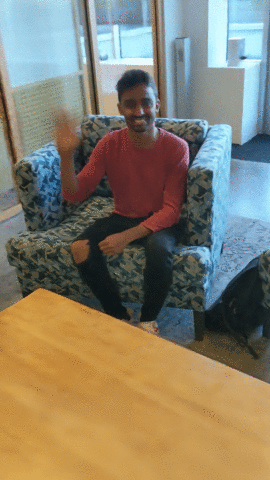-
Notifications
You must be signed in to change notification settings - Fork 40
Blurry results on moving parts #2
Comments
|
Hi, this looks like the scene has become fully static. The losses require some fiddling for each scene, which just means that you train it a number of times with different weights and then try to tweak them until you hit the best performance. I'm working on a slightly improved version that should be a bit easier to train, but I'll put that up in a couple of weeks probably. For now, you can try to lower all the three weights by, say, a factor of 10. The background should become unstable eventually (you'll know what I mean once it happens) and that hand should become better. It could be that the motion of the hand is too fast, especially since the input images seem like they have some motion blur. If that doesn't work, try to turn all three of them off, the reconstruction should be okay, but novel view synthesis will be bad. Additionally, the hand might be too thin and you might need to increase N_samples and N_importance to, say, 256 and 128, respectively. Note that that will slow down training quite a bit, maybe four times. If all of that fails, the fingers in the input might move too detailed for the method. But first just try to lessen the regularizers. Hope that helps, |
|
Hi, |
|
The three regularization losses help to constrain the problem, especially for novel view synthesis where the data term doesn't constrain the learned model enough. Very roughly speaking, the ray bending is pretty free to do whatever it wants, which leads to undesirable, unstable novel view synthesis results if the ray bending isn't regularized. The regularization losses push the model to be more rigid. In the limit where their weights go to infinity, our method becomes the same as rigid Nerf. You will see this if you turn all three of them off and look at novel view results. |
|
could you please tell me how to get the poses using colmap? thanks a lot. |
Hi, which part are you stuck on? There's an explanation on how to integrate Colmap into NR-NeRF here https://github.com/facebookresearch/nonrigid_nerf#installation and then there's an explanation on how to actually run Colmap here: https://github.com/facebookresearch/nonrigid_nerf#preprocess |
|
Also, can you please open a new issue for this? I tried transferring your comment into a new issue but couldn't figure out how. |
Hi,
I have been testing NR NERF on the ayush sequence from the CVD method.
I have followed the instruction to get the poses using colmap. Then i modified the config to train this sequence as follows:
After training, I get this results:

I use
factor = 4to reduce the training time. I think the background is nice but the waving hands are blurry. I read your paper and it seems like we need to carefully tune the weights of 3 losses ? My question is how to tune those numbers and get plausible results ?The text was updated successfully, but these errors were encountered: